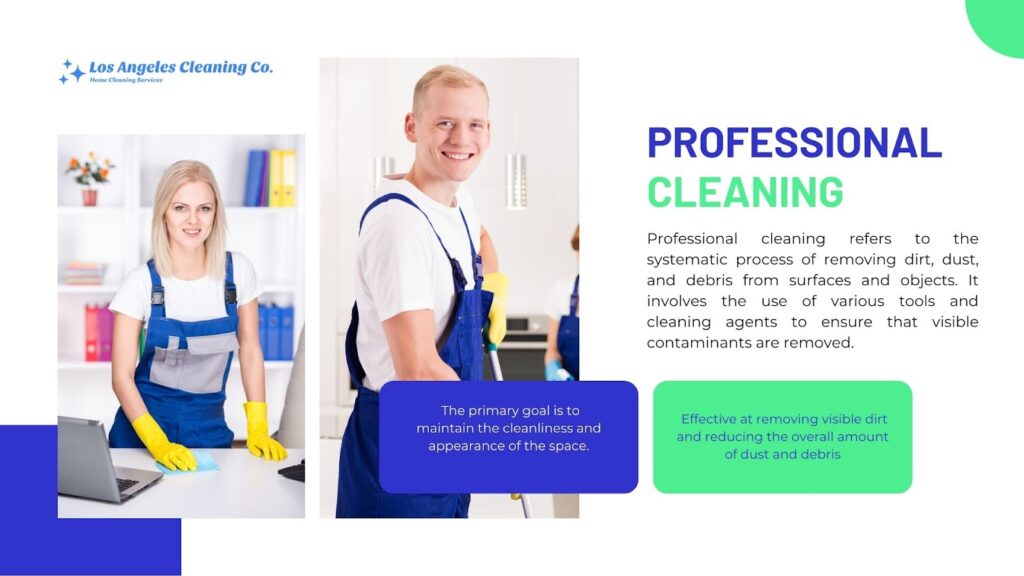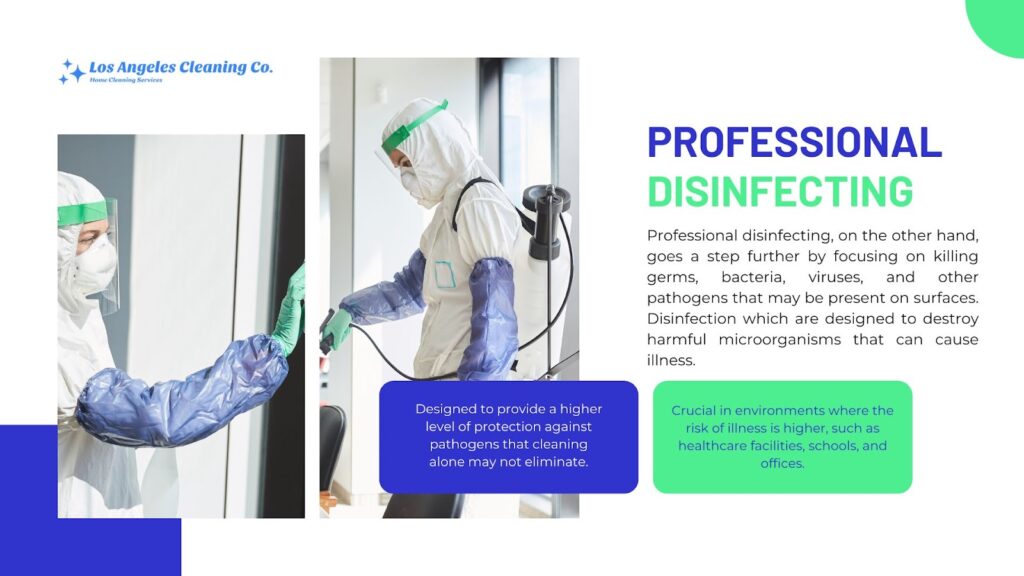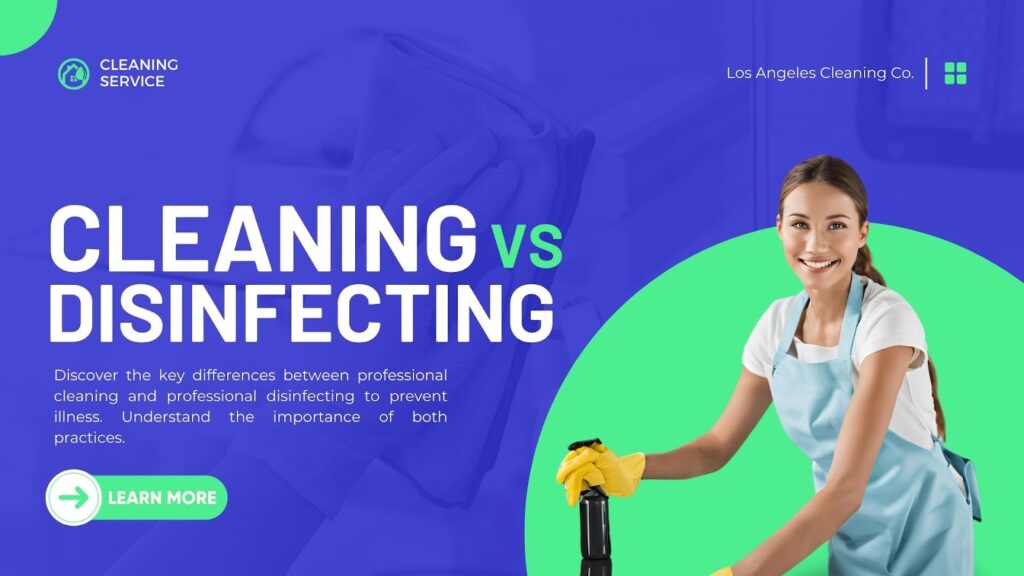In today’s world, maintaining a clean and healthy environment is more important than ever. This is especially true in the wake of heightened awareness around illness prevention. When it comes to keeping your spaces free from harmful germs and pathogens, understanding the distinction between professional cleaning and professional disinfecting can make a significant difference in how effectively you prevent illness.
Here’s a comprehensive guide to understanding these two crucial processes and why they matter for your health.
Choosing the Right Service for Your Needs
When deciding between professional cleaning and professional disinfecting services, consider the specific needs of your environment. For instance:
- Home Environments: Regular cleaning can be sufficient for maintaining a clean and orderly home. However, during flu season or in the event of a sickness outbreak, professional disinfecting can provide added protection.
- Commercial Spaces: Offices, retail stores, and other commercial environments benefit from routine cleaning combined with periodic disinfecting to ensure a healthy workspace for employees and customers.
- Healthcare Facilities: These environments require frequent and thorough disinfecting due to the higher risk of infection. Cleaning is also essential to maintain a sterile environment.

What is Professional Cleaning?
Professional cleaning refers to the systematic process of removing dirt, dust, and debris from surfaces and objects. It involves the use of various tools and cleaning agents to ensure that visible contaminants are removed. This process is essential for maintaining a hygienic environment and involves tasks such as:
- Dusting: Using cloths or dusters to remove dust from surfaces, including furniture, fixtures, and electronics.
- Vacuuming: Employing vacuum cleaners to extract dirt and debris from carpets, rugs, and upholstery.
- Mopping: Cleaning hard floors with mops and appropriate cleaning solutions to remove grime and stains.
- Wiping Surfaces: Cleaning surfaces like countertops, tables, and handles with appropriate cleaning agents.
While professional cleaning is effective at removing visible dirt and reducing the overall amount of dust and debris, it does not necessarily kill germs and bacteria. The primary goal is to maintain the cleanliness and appearance of the space.
Why Both Cleaning and Disinfecting Matter
The combination of professional cleaning and disinfecting provides a comprehensive approach to maintaining a healthy environment. Here’s why integrating both processes is important:
- Enhanced Hygiene: Cleaning removes dirt and debris that can harbor germs, while disinfecting ensures that any remaining pathogens are killed. Together, they provide a more thorough level of cleanliness and health protection.
- Reduced Spread of Illness: By effectively removing and killing pathogens, the risk of illness transmission is significantly reduced. This is especially important in shared spaces and high-traffic areas where germs can easily spread.
- Maintained Appearance and Functionality: Regular cleaning helps maintain the appearance and functionality of surfaces and equipment, while disinfecting ensures that these areas are safe from harmful microorganisms.
- Peace of Mind: Knowing that both cleaning and disinfecting are being carried out provides reassurance that you are taking comprehensive measures to protect your health and that of others around you.

What is Professional Disinfecting?
Professional disinfecting, on the other hand, goes a step further by focusing on killing germs, bacteria, viruses, and other pathogens that may be present on surfaces. Disinfection involves the use of specific chemical agents, often referred to as disinfectants, which are designed to destroy harmful microorganisms that can cause illness. Key aspects of professional disinfecting include:
- Application of Disinfectants: Using chemical solutions that are approved for killing pathogens. These disinfectants are applied to surfaces and left for a specified period to ensure effectiveness.
- Targeted Cleaning: Focusing on high-touch areas and frequently used surfaces such as doorknobs, light switches, and bathroom fixtures, which are more likely to harbor germs.
- Surface Sanitization: Ensuring that disinfectants are applied to all potentially contaminated surfaces to minimize the risk of spreading illness.
- Proper Techniques: Following precise protocols and safety measures to ensure that disinfectants are used correctly and effectively.
Professional disinfecting is especially crucial in environments where the risk of illness is higher, such as healthcare facilities, schools, and offices. It is designed to provide a higher level of protection against pathogens that cleaning alone may not eliminate.
By understanding the critical differences between professional cleaning and disinfecting, you can make informed decisions about how best to maintain a healthy environment. Remember, a clean space is not just about appearance but also about ensuring that your surroundings are safe and hygienic.


